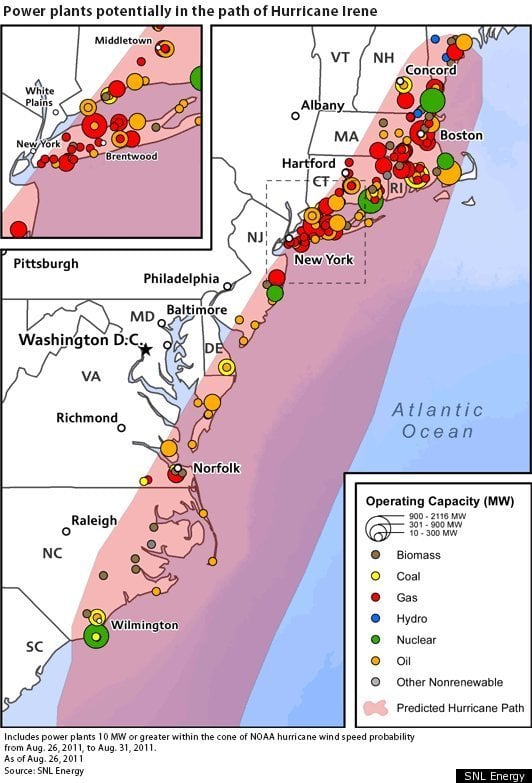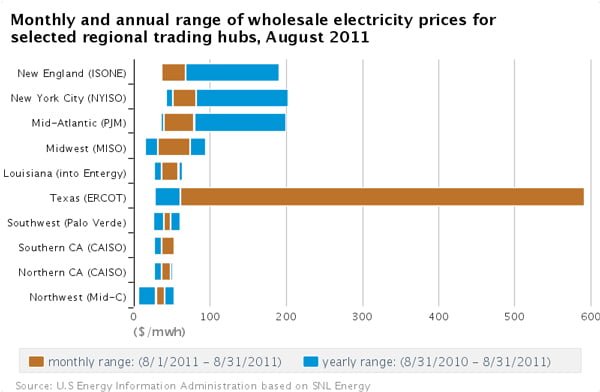Storms hit the US hard this past year.
In August, a large hurricane took an unusual path and dumped record amounts of rain up the whole of the eastern coast, saturating grounds and leaving more than 6 million people without electrical power.
Just days ago, an early snowstorm in the northeast of the country broke tree limbs still full of leaves, downing power lines that left 3 million without power.
A surprise two-feet of snow hit some areas and brought business-as-usual to a halt as residents were trapped in their homes, without electricity, and in some cases without heat. Consequently, schools, shops and businesses were closed and billions of dollars of economic damage is added to the infrastructural damage. Close to a dozen people were reportedly killed by fallen power lines and other storm-related circumstances.
As climate change brings more severs swings in weather, from extreme heat and drought to early frost and bitter snowstorms, we enter into the waning moments of both the current economic model and energy paradigm. The confluence of environmental crisis meets economic and energy collapse in what some call a Clusterf**k.
Dismay and despair fill the minds of those who’ve lost everything amidst the crises. Occupy Wall Street is criticized by the corporate media outlets as having no clear demands, but they’re just not listening. The ills of this lifestyle are too complex to be managed by a talking head in 5 seconds.
Or is it? The simple solution to our ecological, economic, and energy problems may be described in two seconds or less.
Cold fusion.
The radical new energy that can be generated on location, as needed, without the requirement of power lines and substations. That’s right, cold fusion technology means you generate your own power in your own house when you need it, not connected to any grid or centralized power plant. Robust and resiliant, cold fusion technology will be our energy go-to as the fossil fuel infrastructure fades away into ruin.
Cold fusion energy means:
NO centrally located coal plants.
NO centrally located nuclear plants using dangerous radioactive fuel.
NO high-voltage electricity substations.
NO power lines across the wilderness, in town, or on your street.
NO power companies monitoring your consumption and dictating your bill.
Cold fusion is disruptive technology that will change the energy industry from a centralized corporate hierarchy to a decentralized individual network. It is for this and other reasons that cold fusion science has been abandoned by the Department of Energy, a federal entity populated with oil and coal industry veterans as well as hot fusion enthusiasts.
Looking at all the power plants along the eastern US coast that were in the path of Hurricane Irene this year shows the risk that large centralized power plants pose.
Dangerous toxins from coal and coal ash, radioactive fuels, oil and gas pipeline ruptures, all pose a threat to the environment we live in.
Losing services due to weather related events risk the well-being of residents who relay on electricity to power medical devices, food refrigeration, and other important needs.
The economic toll becomes incalculable when homes, businesses, schools and government offices are without power.
This past August, as a hurricane hit the coast, the state of Texas was suffering from a long drought with more days of 100-degree-and-above temperatures than any year since records began. With the drought, farmers lost crops and cattle, wildlife suffered from lack of food and water, and costs shot up when electricity needs increased.
As our economy runs down the peak oil slope, higher fossil fuel costs, loss of jobs coupled with the exponential growth of paper money create human and ecological tragedies that are sure to continue, unless we change paths.
Cold fusion is a reaction that takes place between hydrogen and the atoms inside a solid metal. The metal is “host” to the reaction, but the atoms of the metal also take part in the energy-generating process.
The first commercial device to be released for industrial use runs on simple hydrogen, the main element in water, along with the metal nickel, just like the nickel in your pocket. Called a nickel-hydrogen exothermic reaction the device makes steam heat, heat is clean. There is no carbon dioxide emitted during the reaction.
A single 1 Megawatt nickel-hydrogen E-Cat, the cold fusion-based steam generator created by inventor Andrea A. Rossi, would consume about 20 kilograms of nickel powder and 36 kilograms of hydrogen each year with the only by-product is steam and hot water. The nickel is recyclable after six-months of operation.
On the other hand, a 1 Megawatt coal-fired power plant will burn 20,000 rail cars of coal each year. At 183.65 metric tons CO2 per railcar [see here], that’s 3.7 million metric tons of CO2 for 20,000 railcars.
Since a metric ton is 1000 kilograms, that 3.7 billion kilograms of CO2 emitted annually from a single 1 MW coal-fired power plant.
Nature is not finished with us. In fact, she’s only just begun. With 7 billion people on this planet extracting resources exponentially, climate change and extreme weather add another layer to the stressed social and economic systems.
Cold fusion offers a path to navigate the near-future crises that inevitably will affect our planet to a greater degree. And when storms take the power out, it offers a safe, clean, energy that you have the perogative to turn on and off at will, your will.
Cold Fusion Now!
Related Links
Edmund Storms on “Transition” Cold Fusion Now video October 24, 2011
The Answer to All Our Energy Problems video by Alien Scientist transcribed by Sterling Allan PESN
CO2 Emissions Report July 2000 from EIA
Emissions from Energy Consumption at Conventional Power Plants from EIA


